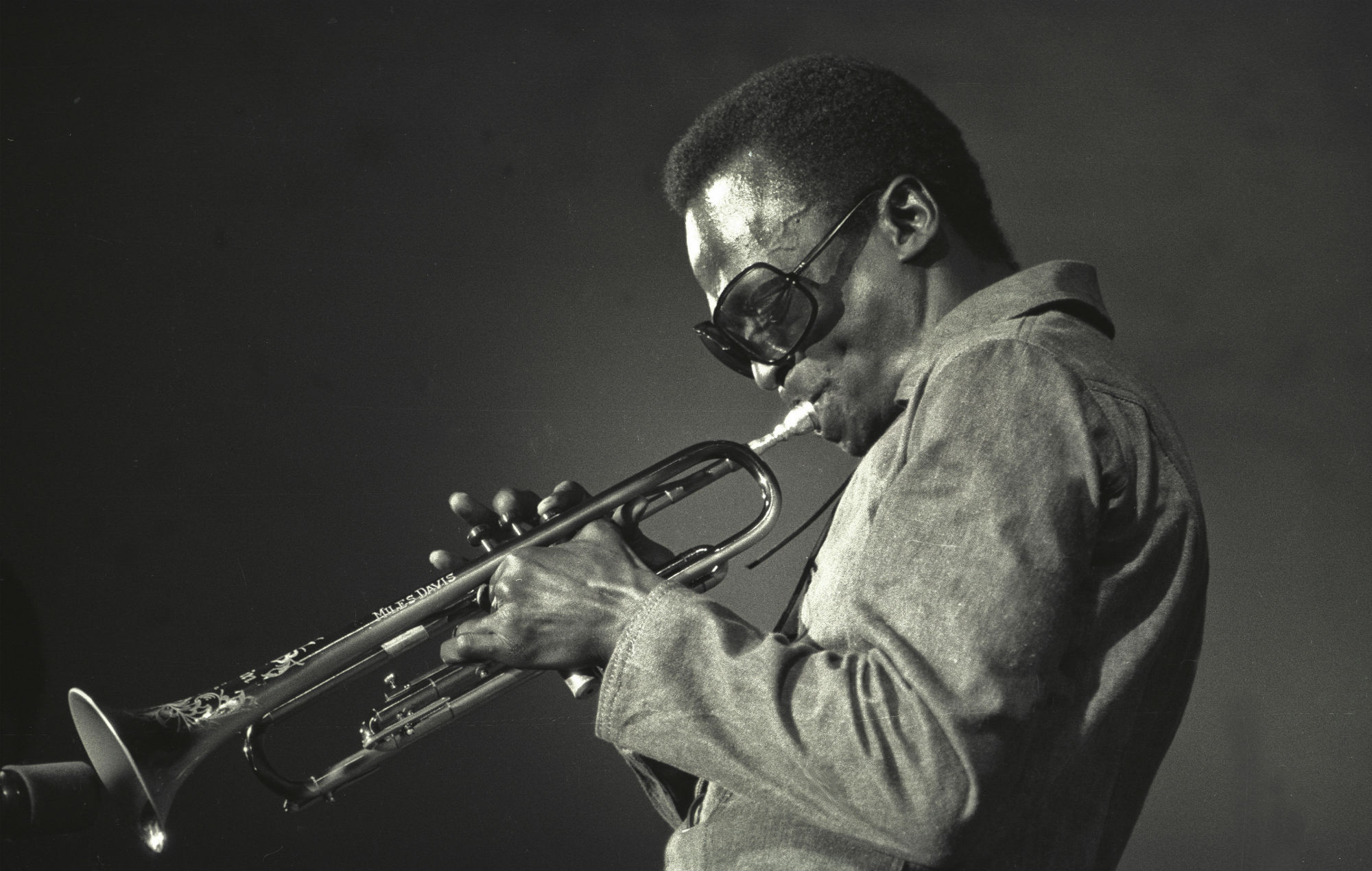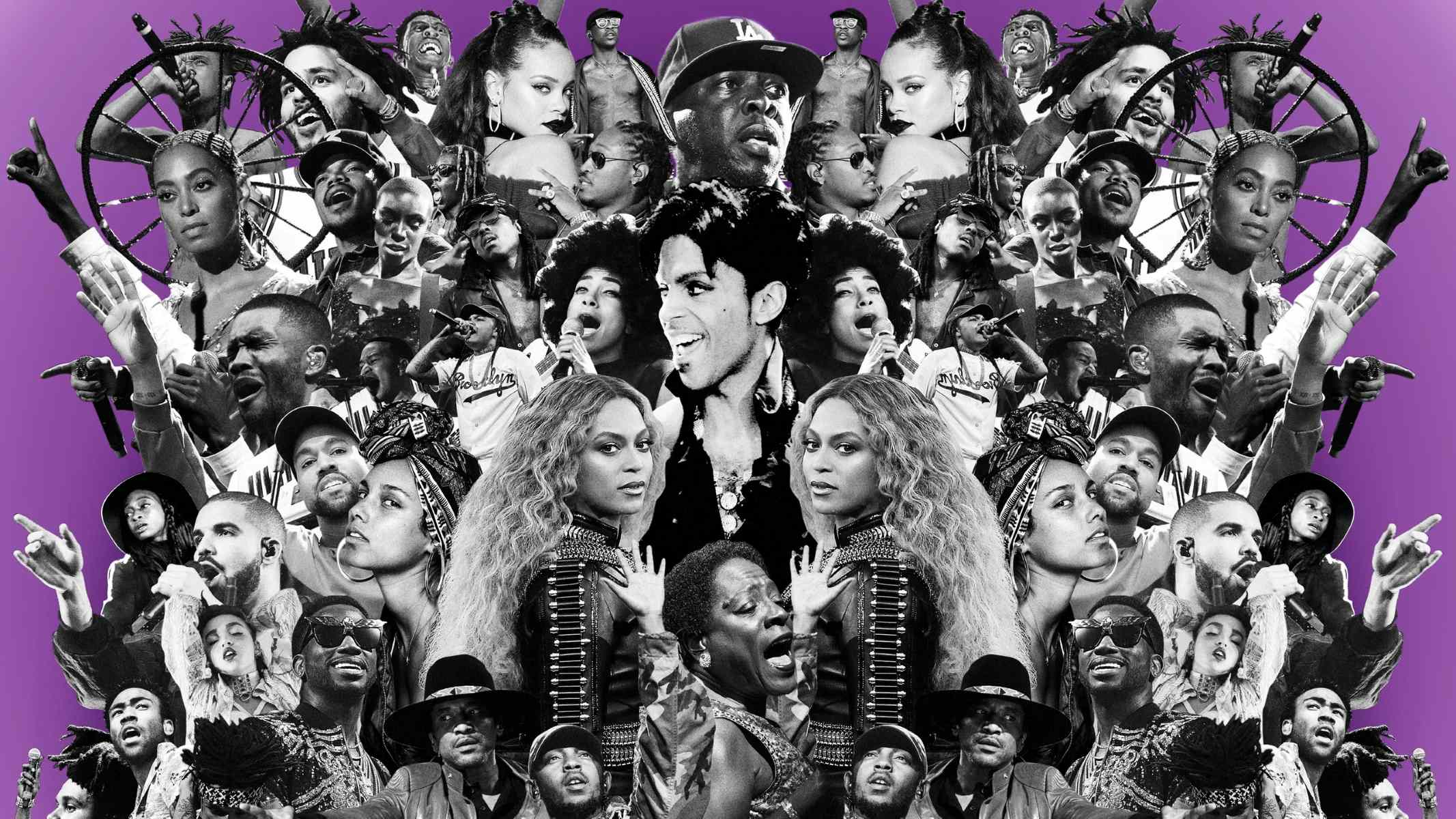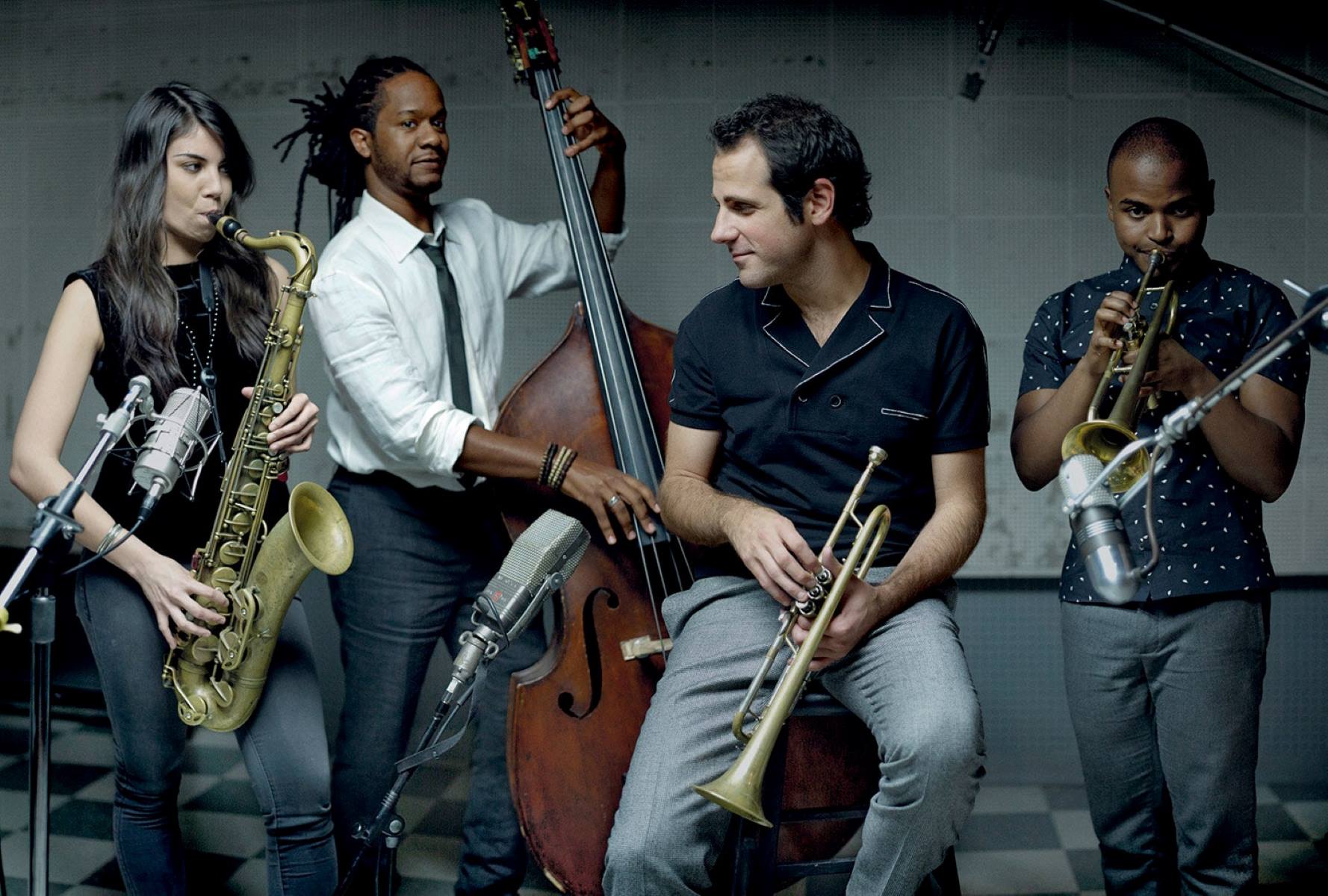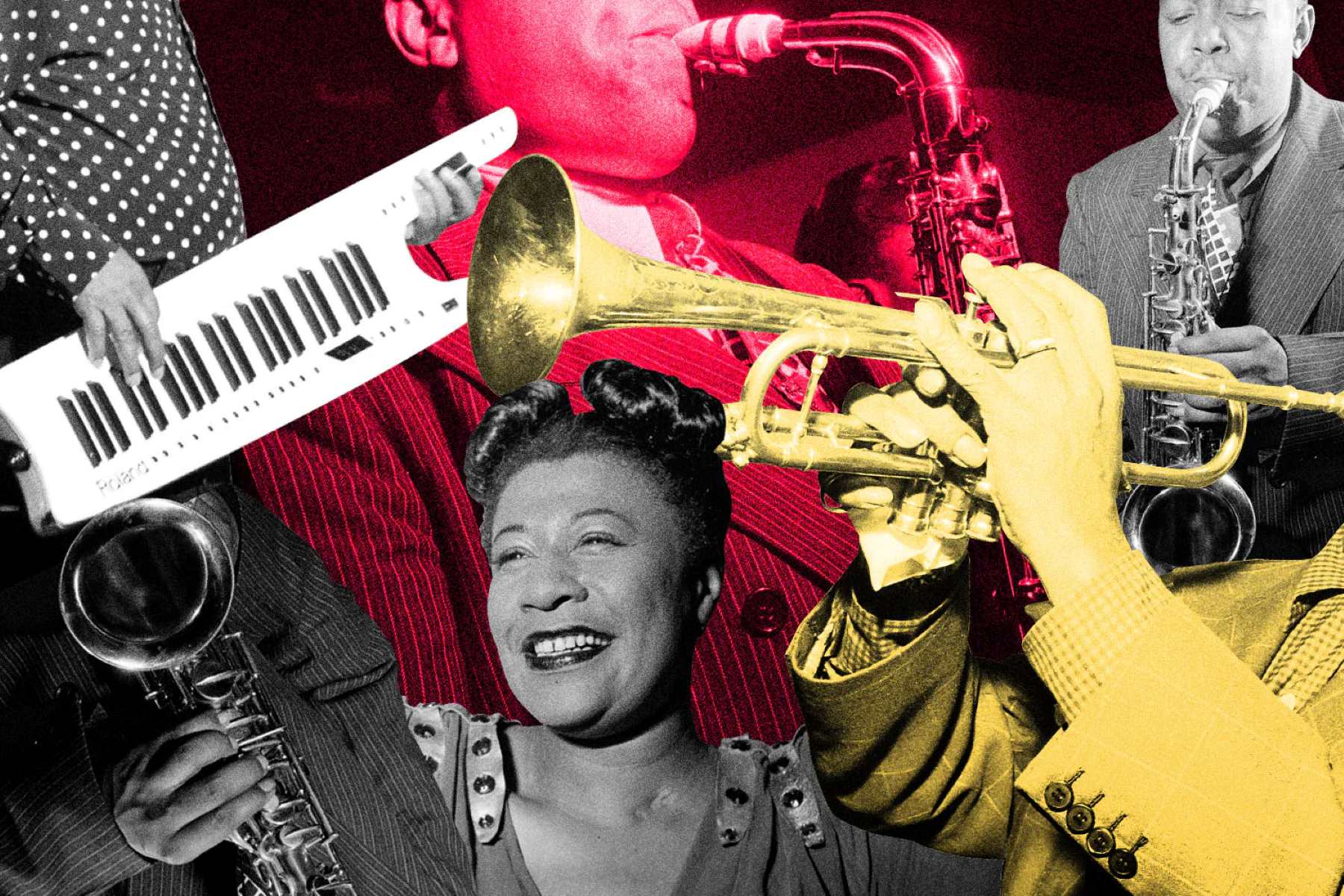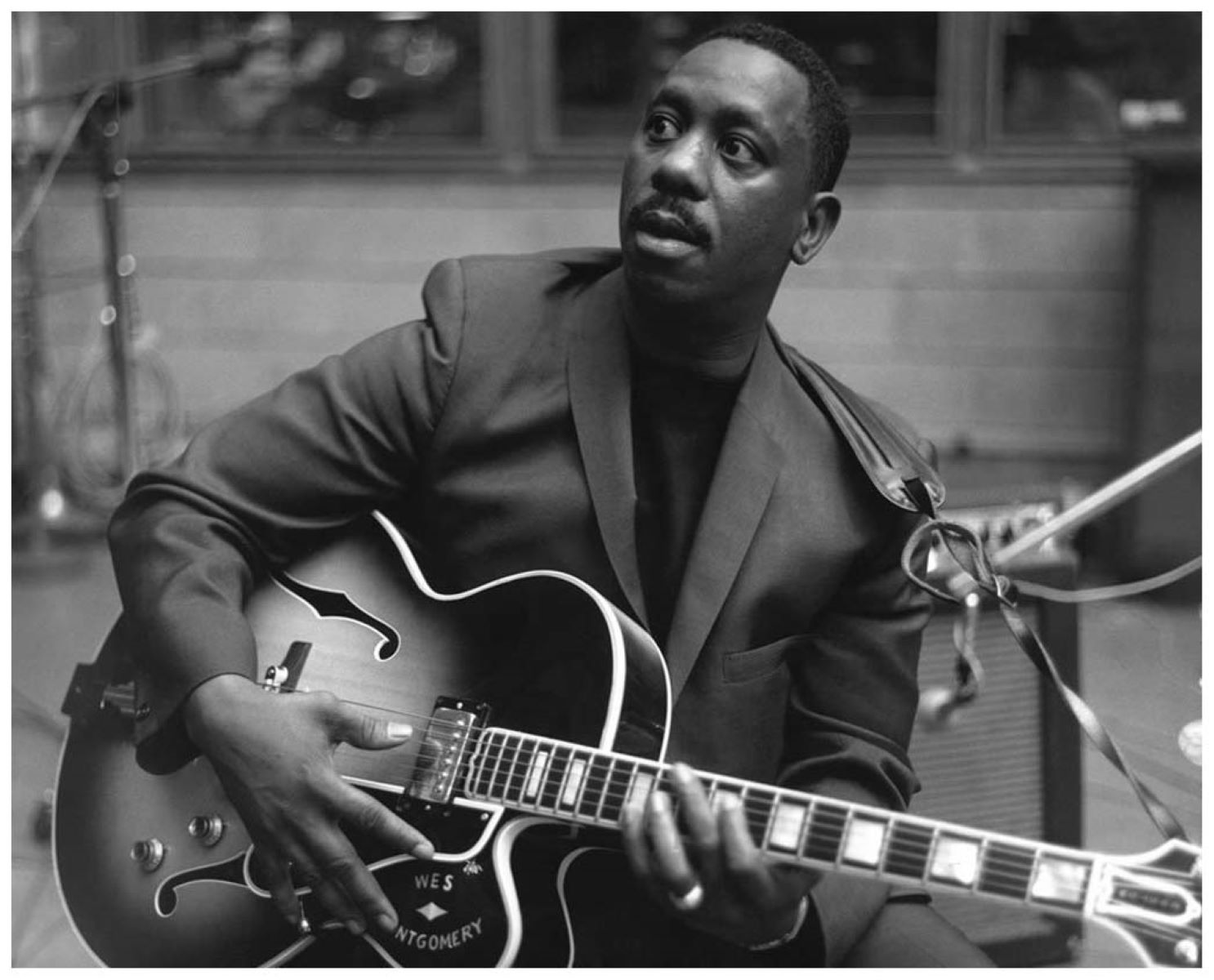Home>Genres>Jazz>Which Jazz Musician Is Regarded As The Most Innovative?


Jazz
Which Jazz Musician Is Regarded As The Most Innovative?
Modified: February 24, 2024
Discover the most innovative jazz musician through this captivating exploration of the genre's history and influential artists.
(Many of the links in this article redirect to a specific reviewed product. Your purchase of these products through affiliate links helps to generate commission for AudioLover.com, at no extra cost. Learn more)
Table of Contents
Introduction
Jazz, born in the late 19th century in African American communities in the United States, has expanded its influence across the globe, captivating audiences with its rich improvisation, expressive melodies, and rhythmic complexity. Over the years, numerous jazz musicians have pushed the boundaries of the genre, constantly innovating and redefining the essence of what jazz can be.
Innovation in jazz has taken various forms, from groundbreaking compositions and arrangements to pioneering improvisation techniques and the fusion of different musical styles. These innovations have not only transformed the world of jazz but have also had a significant impact on the development of other genres, such as rock, funk, and hip-hop.
In this article, we will explore the lives and contributions of some of the most innovative jazz musicians in history. From early pioneers to modern-day trailblazers, these musicians have left an indelible mark on the genre, pushing the boundaries, and inspiring generations of musicians to come.
It is important to note that determining the “most” innovative jazz musician is subjective and open to interpretation. While this article will highlight some notable figures, it is by no means an exhaustive list. Each musician brings their unique style and contribution to jazz, and their impact cannot be measured solely by their level of innovation.
Without further ado, let’s delve into the world of jazz and explore the lives and legacies of these influential innovators.
Early Pioneers of Jazz Innovation
At the turn of the 20th century, jazz was still in its nascent stages, slowly evolving from its roots in ragtime and blues. During this time, several pioneers emerged, pushing the boundaries of traditional music and setting the stage for the innovative spirit of jazz to come.
One such pioneer was Jelly Roll Morton, a pianist, composer, and bandleader. Known for his intricate arrangements and unique blend of ragtime, blues, and Latin influences, Morton’s compositions showcased his innovative approach to jazz. His recordings, such as “Black Bottom Stomp” and “Jelly Roll Blues,” demonstrated a level of sophistication and complexity that had not been heard before in the genre.
Another influential figure in the early development of jazz was Louis Armstrong. Not only was Armstrong a remarkable trumpeter and vocalist, but he also played a pivotal role in the evolution of jazz through his improvisational skills. His innovative use of phrasing, rhythmic nuances, and melodic embellishments became the foundation for jazz improvisation, profoundly influencing generations of musicians to come.
Alongside Armstrong, the saxophonist Coleman Hawkins is often credited with revolutionizing jazz through his pioneering work on the tenor saxophone. Hawkins’ powerful and expressive playing style set new standards for the instrument, elevating it as a featured solo instrument in jazz ensembles. His recording of “Body and Soul” is regarded as a groundbreaking achievement and a testament to his innovative approach.
These early pioneers laid the groundwork for the innovative spirit that would shape jazz in the years to come. Their contributions to the genre not only pushed the boundaries of traditional music but also paved the way for future generations of musicians to explore new possibilities within jazz.
Duke Ellington: Orchestrating Innovation
When it comes to innovation in jazz, one cannot overlook the immense contributions of Duke Ellington. As a pianist, composer, and bandleader, Ellington revolutionized the way jazz compositions were conceived and performed, earning him the title of “America’s greatest composer” by composer George Gershwin.
Ellington’s innovation lay not only in his compositions but also in his approach to orchestration. He saw his band, the Duke Ellington Orchestra, not just as a group of musicians but as a living, breathing organism capable of producing a unique and unified sound. His arrangements were meticulously crafted to showcase the individual talents of his band members, allowing them to shine in their improvised solos.
One of Ellington’s most innovative works was his orchestral suite “Black, Brown, and Beige.” Composed in 1943, the piece explored the African American experience, delving into themes of slavery, spirituality, and resilience. This ambitious composition challenged the conventions of jazz at the time, pushing the boundaries of what was considered acceptable within the genre. Through his compositions, Ellington elevated jazz to the realm of art music, cementing its place as a legitimate form of musical expression.
Another aspect of Ellington’s innovation was his masterful use of musical textures and colors. He experimented with various instrumental combinations, incorporating unconventional instruments like the bass clarinet and the wah-wah mute to create unique sonic landscapes. His mastery of orchestration was evident in pieces like “Harlem Air Shaft” and “Concerto for Cootie,” where the seamless blending of different instruments created a rich and vibrant tapestry of sound.
Ellington’s innovative spirit extended beyond his compositions and orchestrations. He was also a trailblazer in terms of racial integration in jazz. At a time when segregation was prevalent, Ellington’s band consisted of both Black and white musicians, showcasing his belief in the power of music to transcend social boundaries.
Duke Ellington’s innovative approach to jazz composition, orchestration, and band management made an indelible mark on the genre. His influence can still be felt today, as his groundbreaking work continues to inspire and influence musicians across all genres. His commitment to pushing the boundaries of jazz and his belief in the power of music as a unifying force solidify his legacy as one of the most innovative figures in jazz history.
Charlie Parker: Revolutionizing Bebop
When discussing innovation in jazz, it is impossible to overlook the immense contributions of Charlie Parker. Known as “Bird,” Parker revolutionized the jazz scene of the 1940s with his virtuosic skill on the alto saxophone and his groundbreaking approach to improvisation. His innovations played a pivotal role in the development of the subgenre known as bebop.
Parker’s improvisational style was characterized by lightning-fast tempos, intricate melodic lines, and harmonic complexity. He pushed the boundaries of traditional harmonies, introducing new chord progressions and harmonic substitutions that challenged the established norms of jazz. His rapid-fire improvisations, filled with intricate runs and rhythmic variations, set a new standard for technical virtuosity.
One of Parker’s most influential contributions to jazz was his approach to improvisation. Rather than relying solely on familiar melodies, Parker developed an extensive vocabulary of musical phrases and patterns, known as “licks.” These licks became the building blocks of his improvisations and were meticulously crafted to fit within the chord progressions of the songs he was playing. This innovative approach not only showcased his technical prowess but also provided a blueprint for future generations of jazz musicians.
Parker’s compositions also pushed the boundaries of traditional jazz. His iconic tunes, such as “Confirmation” and “Billie’s Bounce,” featured complex melodic lines and rhythmic twists, challenging both the performers and the listeners. These compositions became staples in the bebop repertoire and further solidified Parker’s reputation as an innovator.
Moreover, Parker’s collaborations with fellow jazz musicians, including Dizzy Gillespie and Bud Powell, were instrumental in popularizing the bebop movement. The virtuosic interplay between Parker and his contemporaries set a new standard for improvisation and inspired a new generation of musicians to push the boundaries of jazz even further.
Parker’s enduring influence can be seen in the countless musicians who have been inspired by his innovative approach. His seamless blending of technical proficiency, harmonic innovation, and melodic complexity continues to resonate in the world of jazz and beyond. Charlie Parker’s contributions to jazz not only revolutionized the genre but also serve as a testament to the boundless possibilities of artistic innovation.
Miles Davis: Shaping Modern Jazz
When discussing the most influential figures in the history of jazz, the name Miles Davis undoubtedly stands out. Davis, a trumpeter, composer, and bandleader, left an indelible mark on the genre, forever shaping the course of modern jazz through his relentless pursuit of innovation.
Davis’s career spanned several decades, during which he continuously pushed the boundaries of jazz, embracing new musical styles and experimenting with different sounds. He was never content with staying within the confines of one particular genre or style, constantly evolving and reinventing himself.
One of Davis’s most significant contributions to jazz was his role in the development of cool jazz. In the late 1940s and early 1950s, Davis, along with fellow musicians such as Gerry Mulligan and Gil Evans, sought to move away from the fast-paced, energetic style of bebop. They embraced a more relaxed and subdued approach, characterized by softer tones, intricate arrangements, and a focus on collective improvisation. Davis’s seminal album “Birth of the Cool” was instrumental in popularizing this new sound, which would have a lasting impact on the direction of jazz.
Another pivotal moment in Davis’s career was the release of his album “Kind of Blue” in 1959. Widely regarded as one of the most influential jazz albums of all time, “Kind of Blue” showcased Davis’s exploration of modal jazz, a departure from the traditional chord progressions of bebop. The album’s timeless compositions, including “So What” and “All Blues,” unfolded in a more spacious and open-ended manner, allowing for greater freedom in improvisation. This trailblazing approach not only influenced the development of jazz but also left a profound impact on countless musicians across various genres.
Davis’s affinity for collaboration and his ability to assemble extraordinary ensembles also contributed to his innovative legacy. He surrounded himself with brilliant musicians, such as John Coltrane, Herbie Hancock, and Wayne Shorter, fostering an environment of creative exploration and experimentation. The groundbreaking albums produced by these collaborations, such as “Milestones” and “Bitches Brew,” showcased Davis’s willingness to embrace new sounds and incorporate elements of rock, funk, and electronic music into his compositions.
Miles Davis’s relentless pursuit of innovation and his willingness to challenge the norms of jazz shaped the course of modern jazz and inspired generations of musicians to come. His ability to effortlessly cross genres and push musical boundaries continues to make him a revered figure in the world of jazz and a symbol of artistic innovation.
John Coltrane: Pushing the Boundaries of Improvisation
When it comes to pushing the boundaries of improvisation in jazz, the name John Coltrane reigns supreme. As a saxophonist and composer, Coltrane’s innovative approach and relentless pursuit of musical exploration revolutionized the art of improvisation.
Coltrane’s improvisational style was characterized by his extraordinary technical ability, unmatched harmonic knowledge, and an unparalleled level of intensity. He possessed a seemingly inexhaustible creative energy that allowed him to transcend the limits of traditional jazz improvisation.
One of Coltrane’s most groundbreaking contributions to jazz was his use of chromaticism and his exploration of “sheets of sound.” This technique involved playing rapid-fire streams of notes, often in a sequential fashion, creating a dense and intricate sonic tapestry. Coltrane’s ability to navigate these complex melodic lines with precision and clarity set him apart as a true innovator.
Coltrane’s pursuit of musical freedom led him to delve into modal jazz, a style that relied on scales and modes rather than traditional chord progressions. His album “Giant Steps,” with its intricate and harmonically challenging compositions, became a landmark in the world of jazz and showcased his ability to navigate complex musical structures with both technical prowess and emotional depth.
As Coltrane’s musical journey progressed, he ventured into more avant-garde territories, exploring free and extended forms of improvisation. Albums like “Ascension” and “A Love Supreme” pushed the boundaries of what was considered acceptable in jazz, embracing dissonance, unconventional structures, and spiritual themes. Coltrane’s ability to convey raw emotion through his playing and his fearless approach to musical experimentation left an indelible mark on the genre.
Furthermore, Coltrane’s collaborations with other jazz luminaries, including pianist McCoy Tyner and drummer Elvin Jones, further elevated his innovative spirit. These partnerships nurtured a collective synergy, allowing for even greater exploration and pushing the boundaries of improvisation even further.
Coltrane’s influence extends far beyond the world of jazz. His innovative approach to improvisation has had a profound impact on countless musicians across various genres. His legacy as a boundary-pushing improviser continues to inspire and challenge musicians to explore new horizons of artistic expression.
In the realm of jazz, John Coltrane’s unrelenting dedication to pushing the boundaries of improvisation has shaped the course of the genre. His fearless exploration of new musical frontiers, his technical virtuosity, and his ability to convey deep emotion through his playing solidify his place as one of the greatest improvisers in jazz history.
Herbie Hancock: Fusion of Genres
When it comes to pushing the boundaries of jazz and embracing the fusion of genres, few musicians have been as influential as Herbie Hancock. As a pianist, composer, and bandleader, Hancock’s innovative spirit and willingness to experiment with different musical styles have earned him a prominent place in the world of jazz and beyond.
Hancock’s groundbreaking exploration of fusion began in the 1970s with his album “Head Hunters.” Incorporating elements of funk, rock, and even electronic music, Hancock and his band created a new sound that challenged traditional jazz conventions. With tracks like “Chameleon” and “Watermelon Man,” Hancock seamlessly blended jazz improvisation with infectious grooves, creating a revolutionary musical fusion.
One of Hancock’s most iconic compositions, “Cantaloupe Island,” exemplifies his ability to fuse different genres. This jazz standard, which combines elements of Latin, funk, and blues, became a testament to Hancock’s versatility as a composer and his ability to seamlessly integrate diverse musical influences into his work.
Moreover, one cannot mention Herbie Hancock without acknowledging his groundbreaking experiments in electronic music. With albums such as “Future Shock” and “Head Hunters,” Hancock passionately embraced new technologies and incorporated synthesizers and drum machines into his compositions. The hit single “Rockit” from the album “Future Shock” showcased his ability to blend jazz improvisation with electronic beats and sounds, ultimately becoming a pioneering track in the emerging genre of hip-hop.
Hancock’s willingness to collaborate with artists from different genres further exemplifies his commitment to musical fusion. His collaboration with Joni Mitchell on her album “Mingus,” as well as his work with musicians like Wayne Shorter and Chick Corea, exemplifies his ability to adapt his playing to various musical contexts and genres.
Beyond his fusion experiments, Hancock’s improvisational skills and harmonic knowledge have continued to set him apart as an innovative force in jazz. His ability to seamlessly blend different musical languages, whether it be traditional jazz, funk, rock, or electronic, demonstrates a mastery of both technique and artistic expression.
Herbie Hancock’s pioneering work in fusion and his unyielding commitment to exploring new musical territories have left an indelible mark on the world of jazz and popular music. His ability to fuse genres and push the boundaries of what is considered jazz have paved the way for future generations of musicians to break free from traditional constraints and embrace musical innovation.
Conclusion
Jazz is a genre that thrives on innovation and the fearless exploration of musical boundaries. Throughout its history, numerous iconic musicians have emerged as pioneers, pushing the limits of what jazz can be and forever changing the landscape of music. From early pioneers like Jelly Roll Morton and Louis Armstrong to modern-day innovators like Herbie Hancock and Miles Davis, each jazz musician has made a unique and profound impact on the genre.
These influential figures have reshaped the conventions of jazz through their trailblazing compositions, groundbreaking improvisation techniques, and the fusion of diverse musical styles. Duke Ellington redefined the role of the composer and orchestrator, crafting unique soundscapes for his band to thrive in. Charlie Parker revolutionized bebop, paving the way for complex improvisations and intricate melodic lines. Miles Davis shaped modern jazz through his exploration of new soundscapes and his willingness to embrace different musical genres. John Coltrane pushed the boundaries of improvisation, leaving a lasting impact on the art of jazz. Herbie Hancock fused diverse genres, demonstrating the power of musical collaboration and innovation.
While it is impossible to determine a single “most” innovative jazz musician, each of these pioneers has played a crucial role in shaping the genre’s evolution. Their contributions have inspired countless musicians to push the boundaries, experiment with styles, and explore new avenues of artistic expression.
Jazz continues to evolve as new generations of musicians carry on the legacy of innovation. The genre remains a platform for self-expression, improvisational mastery, and collaborative exploration. As we look to the future, we can only anticipate the exciting innovations and artistic discoveries that await us in the ever-evolving world of jazz.
Ultimately, jazz stands as a testament to the power of human creativity, the spirit of innovation, and the limitless potential of music. Whether it’s the groundbreaking compositions, the fearless improvisations, or the fusion of different genres, jazz continues to captivate and inspire audiences worldwide, leaving an indelible mark on the rich tapestry of musical history.

